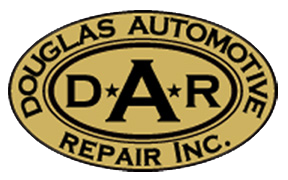One might say the most challenging part of being an automotive technician in is diagnosing a problem before it can be fixed.

Cars are made up of a bunch of complex systems. There usually could be a number of reasons for any given symptom. So it’s challenging to track down the actual cause of the problem. And it can be frustrating for the vehicle owner because it can take time and money to get to the bottom of a problem.
If it’s not something obvious, it’s easy for the customer to focus on the fixing and not the diagnosing. Let us at Douglas Automotive Repair, Inc. introduce you to something we’ll call ‘Customer Detective Work’ – that is helping the technician find clues to what’s wrong.
We start with the detective basics: What, Where and When. Play along with me; You come in to Douglas Automotive Repair, Inc. and your car is making a funny sound…
- Where’s the sound? – ‘Around the right front wheel’.
- What kind of sound? – ‘Kind of a clunk, clunk sound’.
- When do you hear the sound? – ‘When I turn and accelerate.
- Right and left? Forwards and back?’
You see where we’re going. You’re gathering additional information to help our technician know where to start. Based on your car and the tech’s experience, we’ll know where to look on you vehicle and can start with the obvious suspects.
You can see how that would be more helpful than dropping the car off with a note that says “making a funny noise“.
When you think you need to bring your vehicle in, make some notes about the problem it’s having. Rather than just saying “it’s leaking”, tell the tech the color of the fluid, and approximately where under the car you see the puddle.
Things like ‘the car is stalling or sputtering’ are often very hard to diagnose because they’re intermittent. They may not happen every time you drive and may not be happening when you actually bring the car in. So, it is a big help for you to describe what’s happening in as much detail as possible.
Our technician will need to be able to duplicate the problem if possible so he needs to know details, like “It stalls after it’s been driven for about 20 minutes and I go over 50 miles an hour”. If the technician can experience the problem personally, he’s better able to make a diagnosis and repair. And, then test to see if the repair solved the problem.
Give us a call today.This entry was posted in Diagnosis and tagged Diagnosis, Vehicle Repair on .
